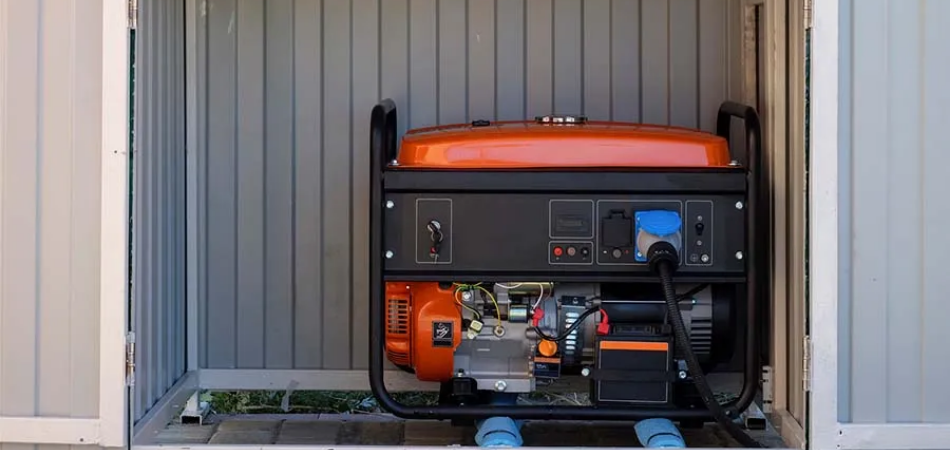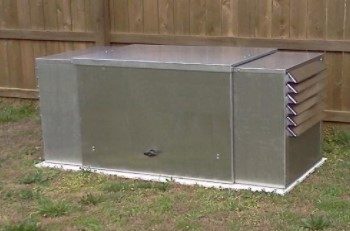A portable power generator is a life-saving machine, especially for people who live in areas prone to extreme weather such as storms, hurricanes, snow, or earthquakes. In such times prolonged power outages are inevitable. Most people depend on generators to power up their home appliances, keep warm, and light their homes.
There are adverse risks that come with using generators in such conditions. For example, incorrectly using a generator in a wet area can lead to electrocution or electric shock. Generally, generators are not designed to be used during stormy weather. However, if some safety measures are implemented and adhered to, you can use them as normal.
If you have been wondering how to use your generator during a storm, worry no more. This article digs deeper into how to safely use and put a generator during a storm. Stay with us.
Where To Put A Generator During A Storm?
During extreme weather such as storms, keeping your generator in a safe place is crucial. Considering generators produce carbon monoxide, it is recommended at least six meters away from the house in a well-ventilated shed. This is a general safety tip for where to put a generator, irrespective of weather conditions.

There are two applicable scenarios of where to put your generator during a storm; when it’s running and when it’s not in use.
Where To Put Your Generator That Is Running During A Storm?
We all know power generators produce electricity, and electricity is not water’s best friend. Therefore, it is essential to keep it dry. You should ensure your generator is correctly sheltered from rainwater in order to use it during a storm. Below are a few places you can store your generator that is running during a storm:
GenTent Safety Canopy: This is a special type of canopy tent designed to protect your generator against rainwater. It is 100% waterproof and can be used outside.

This tent is user-friendly and can be carried along with your portable generator. It is properly ventilated; your generator will not overheat when in use. It is suitable for people who move around with their generators.
Steel enclosures: This is a generator shed made of steel or iron sheet. Some require professional skills to install and might be expensive. Steel enclosures are durable and suitable for standby generators; it is not ideal for moving around. Steel enclosure requires a cement slab upon which it will be installed.

Where To Put Your Generator That Is Turned Off During A Storm?
A generator should be kept in a dry place to avoid damage. You can store your generator in any of the below-listed places:
- A well-ventilated shed.
- A tent designed for generators.
- A cover designed for generators.
Here are some examples of covers specifically designed for generators to withstand harsh weather conditions:
- Rubbermaid Horizontal Storage Shed.
- Microfiber Portable Generator Enclosure.
- Suncast Horizontal Storage Shed.
It is important to cover your generator to protect it from dirt, moisture, and debris. This way, you are guaranteed an extended life expectancy.
How To Safely Use The Generator During Storms
You probably have heard the phrase “get a game plan” when talking about emergency preparedness generators for extreme weather conditions. This game plan has to include safety practices for generator use. Before using a generator, there are a few safety tips you should keep in mind regardless of weather conditions. These tips include:

- Do not run a generator in the rain – Make sure that when it’s raining or there is a storm, your generator is properly shielded against rainwater and, more so, has adequate ventilation.
- Do not run a generator inside the house/garage – Generators produce carbon monoxide, which is harmful and can cause death within 30 minutes of inhaling. Most injuries/deaths occur from carbon monoxide poisoning because some use their generators indoors or in enclosed areas.
- Have your generator installed at least 6 meters (20 feet) from your house – Ensure your generator is nestled away from the main house with the exhaust facing away from doors and windows. This helps in preventing CO poisoning.
- Ensure your generator shed is waterproof – If you are using a generator canopy, make sure your generator is well covered. Generator canopies are waterproof. If your generator is inside a homemade shed, make sure there is no water leakage that can cause damage.
- Never plug your generator directly into a home’s wiring – This is a very common mistake most people make. It is dangerous; power will back feed and potentially cause a safety hazard and equally damage your generator.
- Never refuel your generator while running – Be cautious never to refuel your generator while it’s still running or hot. This might easily ignite an explosion or fire. Turn off your generator to allow it to cool down before refueling. Always use fresh fuel.
- Use heavy-duty extension cable – Ensure you use a recommended heavy-duty outdoor cord that runs from the generator to the house. Light-duty cables get easily damaged and can cause electrocution. Make sure your cable is not worn or frayed.
Conclusion
Natural disasters such as storms and hurricanes often cause a lot of damage. While using a power generator during such times, you possibly might plunge into a further problem: rainwater. Typically, it is not safe to use your generator in moist or wet weather, snow or rain. These weather conditions are avoidable, and surprisingly, it’s when we need the generator most.
Generators produce strong electric currents that, when in contact with water, could explode or cause electrocution. If moisture gets into your generator, it could be disastrous; it could also result in serious damage to your generator. Therefore, it is essential to shield your generator from water and moisture for safety purposes. This is also crucial for its effective running.
